I have an asp.net core odata api. I want to enable swagger for this api. The version of asp.net core is 2.2 and the dependencies of this project are as below picture:
and the config of startup is as below:
public class Startup
{
public Startup(IConfiguration configuration)
{
Configuration = configuration;
}
public IConfiguration Configuration { get; }
// This method gets called by the runtime. Use this method to add services to the container.
public void ConfigureServices(IServiceCollection services)
{
services.AddMvc().SetCompatibilityVersion(CompatibilityVersion.Version_2_2);
services.AddDbContext<SeeMiddleContext>(options =>
{
options.UseSqlServer(
"Data Source = 192.168.1.1;Initial Catalog=Seem;persist security info=True;user id=Sas;password=Sas1");
});
services.AddOData();
services.AddSwaggerGen(options =>
{
options.DescribeAllEnumsAsStrings();
options.SwaggerDoc("v1", new Swashbuckle.AspNetCore.Swagger.Info { Title = "eShopOnContainers - Catalog HTTP API", Version = "v1", Description = "The Catalog Microservice HTTP API. This is a DataDriven/CRUD microservice sample", TermsOfService = "Terms Of Service" });
});
}
// This method gets called by the runtime. Use this method to configure the HTTP request pipeline.
public void Configure(IApplicationBuilder app, IHostingEnvironment env, ILoggerFactory loggerFactory)
{
if (env.IsDevelopment())
{
app.UseDeveloperExceptionPage();
}
else
{
// The default HSTS value is 30 days. You may want to change this for production scenarios, see https://aka.ms/aspnetcore-hsts.
app.UseHsts();
}
app.UseHttpsRedirection();
app.UseMvc(routeBuilder => {
routeBuilder.EnableDependencyInjection();
routeBuilder.Expand().Select().OrderBy().Filter().MaxTop(40);
});
app.UseSwagger();
app.UseSwaggerUI(c =>
{
c.SwaggerEndpoint("/swagger/v1/swagger.json", "My API V1");
});
}
}
When I run the api and when I type "/swagger" in the url, then I will encounter the error that is shown in below picture:

